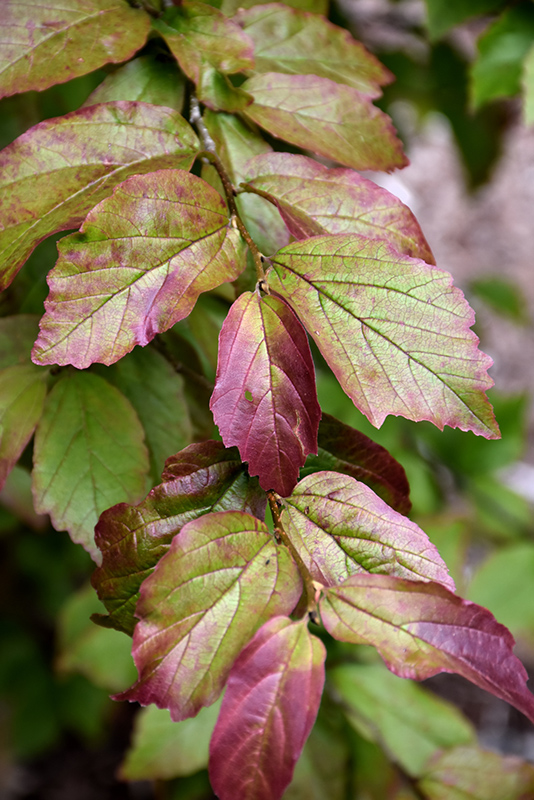Parrotia, Persian Spire Parrotia persica 'JLColumnar' Height: 25 feet Spread: 10 feet
Sunlight:
Hardiness Zone: 5a Other Names: Persian Ironwood Brand: J. Frank Schmidt & Son Co. Description: A unique variety with a very neat, columnar habit of growth; foliage emerges purple, and matures to lime green with purple margins; fall colors ranging from yellow to orange to burgundy red, holding into late fall; very adaptable to diverse conditions Ornamental Features Parrotia, Persian Spire is primarily valued in the landscape for its rigidly columnar form. It has attractive lime green foliage edged in plum purple which emerges purple in spring. The serrated oval leaves are highly ornamental and turn outstanding shades of yellow, orange and red in the fall. The mottled brown bark is extremely showy and adds significant winter interest. Landscape Attributes Parrotia, Persian Spire is a dense deciduous tree with a narrowly upright and columnar growth habit. Its average texture blends into the landscape, but can be balanced by one or two finer or coarser trees or shrubs for an effective composition. This is a relatively low maintenance tree, and is best pruned in late winter once the threat of extreme cold has passed. It has no significant negative characteristics. Parrotia, Persian Spire is recommended for the following landscape applications; Planting & Growing Parrotia, Persian Spire will grow to be about 25 feet tall at maturity, with a spread of 10 feet. It has a low canopy with a typical clearance of 1 foot from the ground, and should not be planted underneath power lines. It grows at a medium rate, and under ideal conditions can be expected to live for 60 years or more. This tree should only be grown in full sunlight. It is very adaptable to both dry and moist locations, and should do just fine under average home landscape conditions. This plant should be periodically fertilized throughout the active growing season with a specially-formulated acidic fertilizer. It is not particular as to soil type or pH. It is highly tolerant of urban pollution and will even thrive in inner city environments. This is a selected variety of a species not originally from North America.![]()
![]()
![]()
![]()
![]()
![]()
![]()
![]()
![]()
![]()
![]()
![]()
![]()


